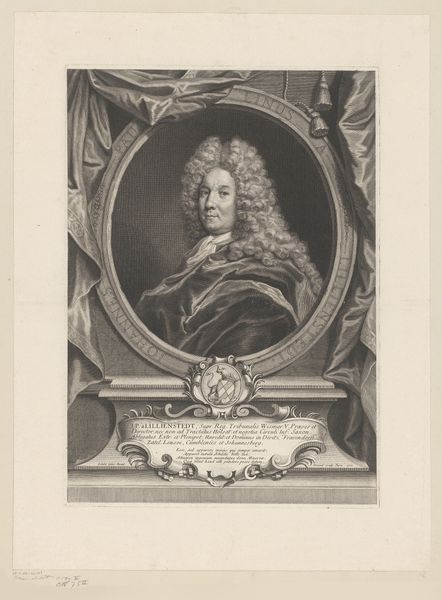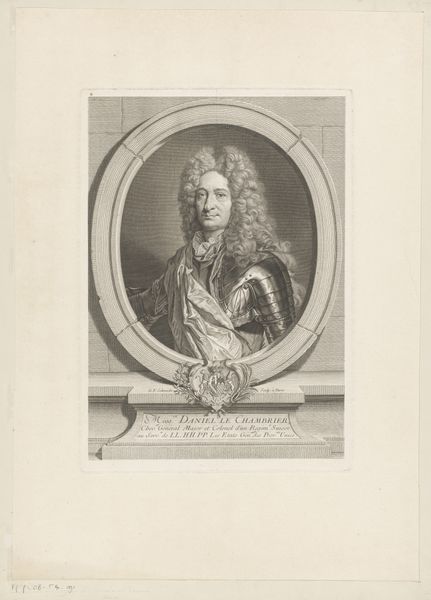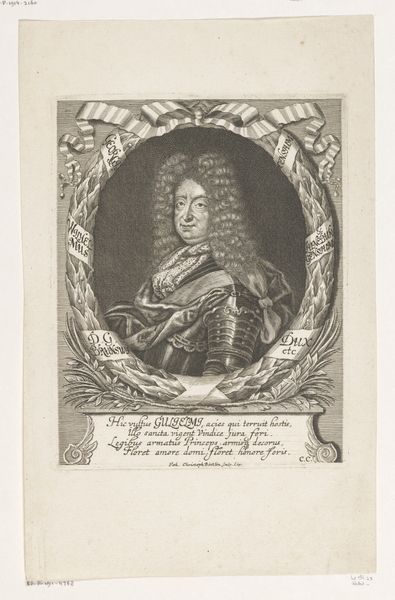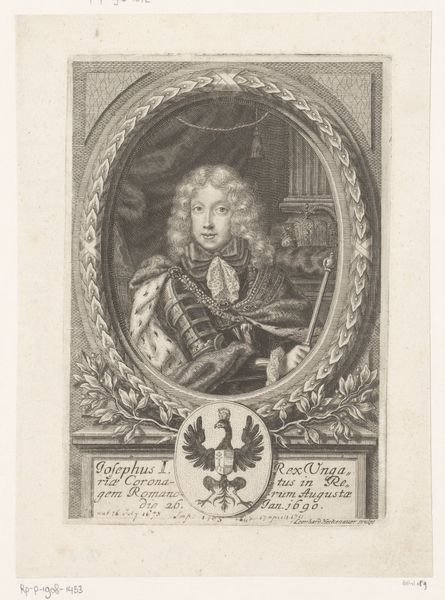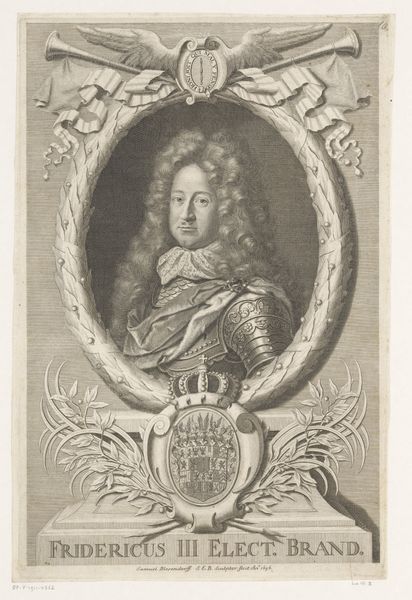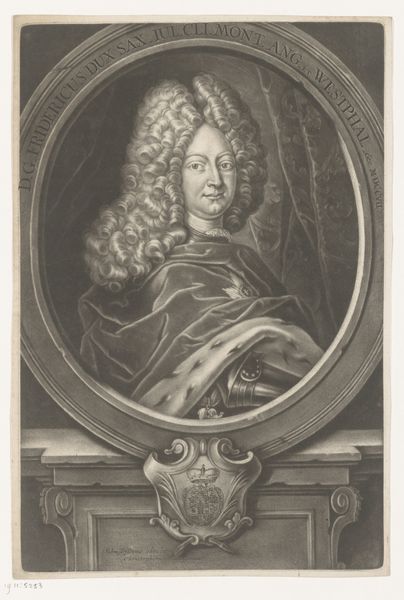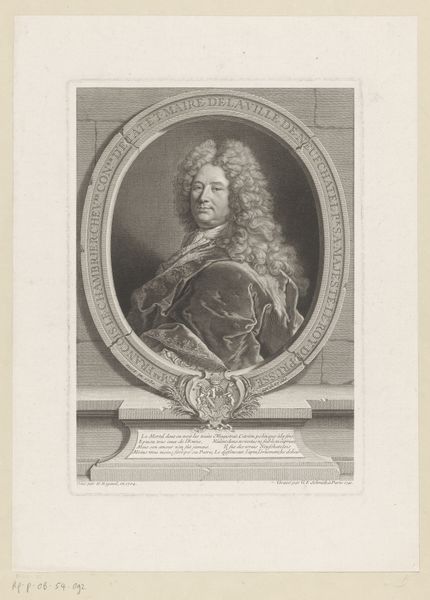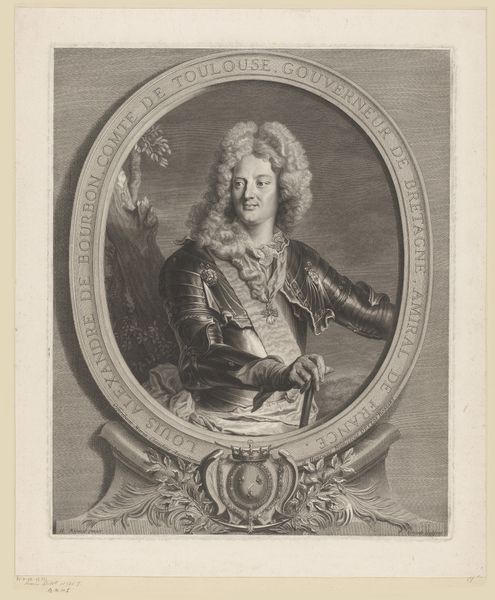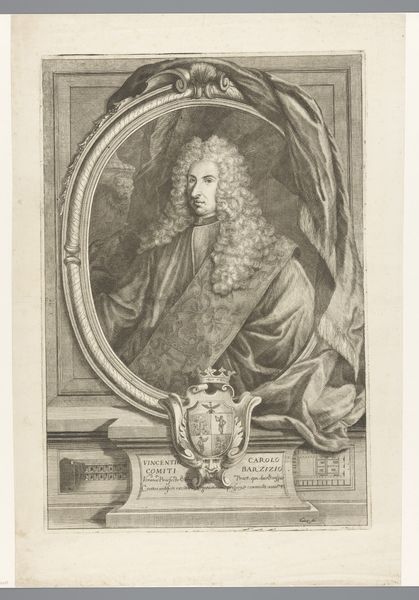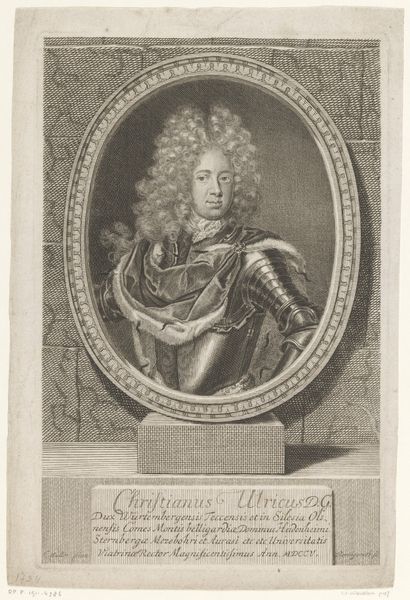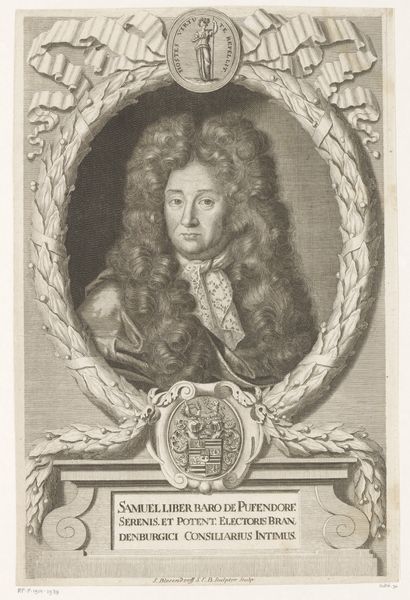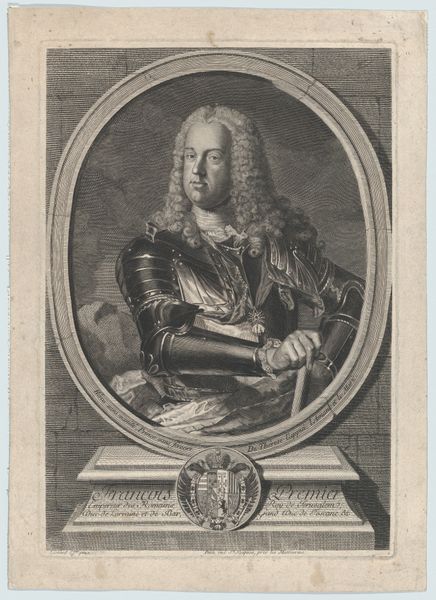
engraving
#
portrait
#
baroque
#
history-painting
#
academic-art
#
engraving
Dimensions: height 444 mm, width 327 mm
Copyright: Rijks Museum: Open Domain
Editor: This is a portrait of Frederick I, King of Prussia, from 1692, by Johann Hainzelmann. It's an engraving, which is incredible given the level of detail. It’s rather imposing, even for a king's portrait. What stands out to you? Curator: Well, immediately, I'm drawn to the symbols layered into the imagery. Observe the laurel wreath encircling the portrait. In Roman iconography, it signifies victory and triumph, suggesting a connection to a lineage of celebrated rulers. Editor: Right, like a Caesar! The framing devices work really well. Curator: Exactly! And notice how the armor, though subtly rendered, hints at military prowess and protection, embodying both the ruler's power and his duty to safeguard his kingdom. Consider how armor functions not only for the wearer, but symbolically for all the culture. What psychological impact might it have? Editor: It presents this very interesting duality. It protects and hides but also emphasizes strength. What about that almost nonchalant presentation within such heavy symbolism? He seems unbothered, yet it's all there framing him. Curator: Precisely! It is almost like a theatrical production! It makes you wonder what that specific choice reveals about the expectations of the monarchy and Hainzelmann's perspective. It encourages viewers to not just passively observe but actively engage with the imagery, considering the various layers of meaning embedded within the engraving. Editor: It's amazing how much symbolism can be packed into a portrait. The context is fascinating, revealing so much more than just an image of a King! Curator: Indeed, and it illustrates how visual symbols function as powerful conveyors of cultural memory. A continuity embedded and remembered over time!
Comments
No comments
Be the first to comment and join the conversation on the ultimate creative platform.


